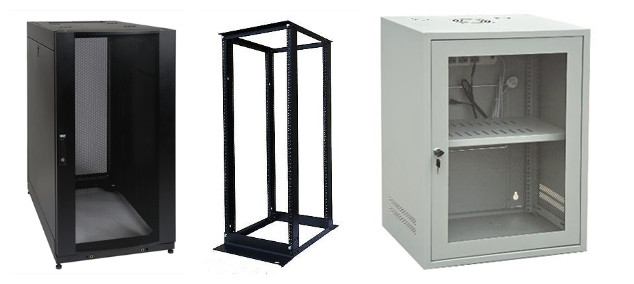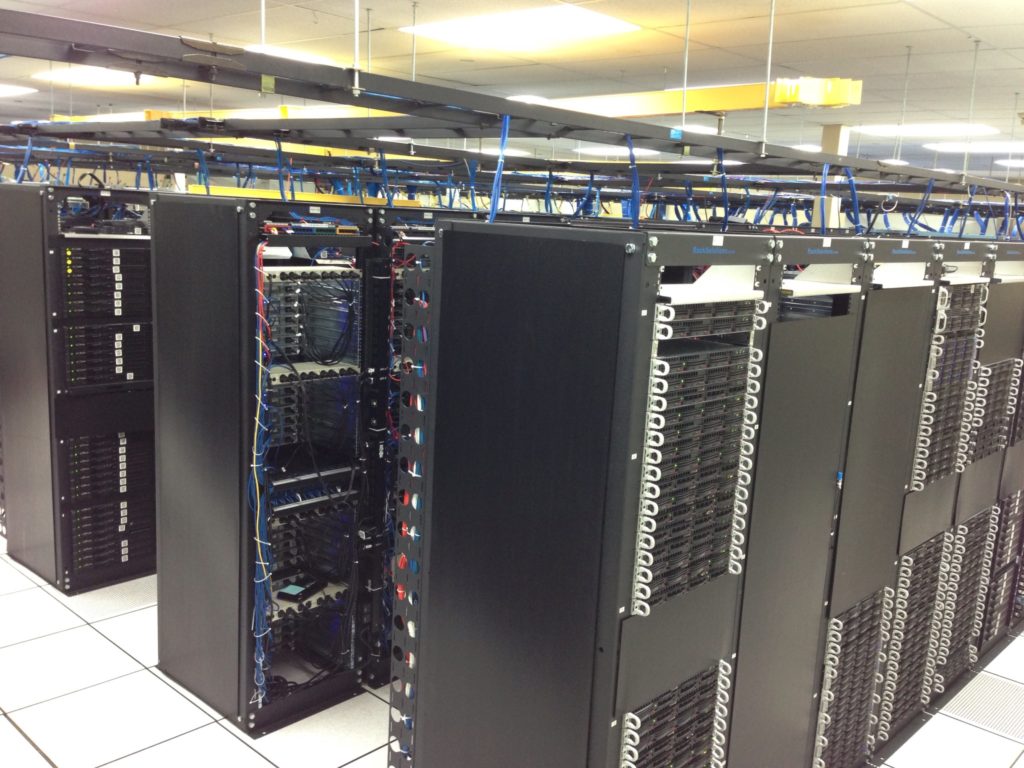When designing a data center, server room or network closet, deciding which racks or cabinet to deploy and how to configure them should be the most important thing to be considered. Because a right network rack or cabinet can bring a lot of benefits such as improving power protection, cooling, security as well as cable management. This post will list several considerations that need to be paid attention to when buying a network rack or cabinet.
Network rack or cabinet is essential frame structures designed for housing standard 19” rack-mount equipment-servers, routers, switches, audio or video gear, etc. It allows for better organization and offers additional security and cable management. Network racks or cabinets are mainly used in data centers, server rooms, audio or video installations, some also deployed in industrial environments such as a factory floor. Usually, there are three common types of network racks.

- Rack mount enclosure—rack mount enclosures have removable front and rear doors, removable side panels and four adjustable vertical mounting rails. They are ideal for applications that require heavier equipment.
- Open-frame racks—open frames have no sides or doors, but with mounting rails. They are good for applications where the racks do not need to control airflow or provide physical security.
- Wall-mount racks—these racks are often attached to the wall, which helps save space and fit in areas where other racks can’t. They also can be enclosed cabinets or open frame racks.
There are various kinds of network racks or cabinets on the market now. If you are in the market and trying to decide on which is best for you, the following references may help you.

Knowing clearly what you have, then it may be easy to choose what you need. The first factor needs to be considered is the physical dimensions and the weight of your equipment. Some equipment maybe bulky or heavy, and they might only suit in the racks or cabinets that are designed to be placed on the floor. While some equipment might be smaller which can fit inside desktop or wall-mount cabinet. In order to organize your equipment, it’s important to consider the practical situations of your own equipment.
Choosing a network rack or cabinet with enough internal space to house your current equipment and enough room to accommodate planned future expansion is vital for your network systems. Keep in mind that space for accessories such as environmental monitoring devices, sensors, remote power management devices and battery back-up may also be necessary. So the size of a rack or cabinet including height, width, depth and load rating should be taken into consideration.
Different equipment applications need different access points. Some may need only front access, while others may need side or back access. Decision on what type of access points you might need to manage your equipment and ensure the rack or cabinet you choose can offer you the access point you need.
Some applications like data centers or server rooms require to keep equipment cool without any special measures. Therefore, when choosing racks or cabinets, cooling system is also a factor that needs to be considered. Since the structures of different racks are various, the airflow in them is also different. For example, open frame racks offer very little control over airflow although they are great for some applications. The best racks for managing equipment cooling are floor-standing rack enclosures because they provide the most control over airflow.
As we all know, equipment in racks also requires many power outlets, especially most IT equipment has more than one cord and power supply. You also need a way to reach distant wall outlets from the rack. Power distribution units can solve this problem. And they also can offer features like current monitoring, remote management, automated alerts and individual outlet control.
Network racks or cabinets are important in organizing equipment in data centers or server rooms. And the process of choosing a suitable network rack or cabinet is often nothing more than a cost exercise. No matter what rack or cabinet you choose, the suitable is better. In a word, choosing the right racks or cabinet and configuring them properly will ensure your equipment work reliably and effectively.
